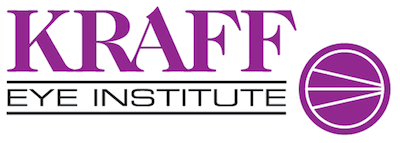Laser Vision Correction

VILLAGE EYECARE partners with the Kraff Eye Institute to provide and co-manage laser vision correction treatment. Ask your eye doctor if lasik is right for you.
Experience Clearer Vision with LASIK Surgery in Chicago at Village Eyecare
Are you tired of relying on glasses or contacts for clear vision? LASIK eye surgery in Chicago could be your key to freedom!
While Village Eyecare utilizes advanced LASIK technology, we collaborate with experienced surgeons to deliver exceptional results for Chicago patients seeking laser vision correction. We offer pre-operative consultations and co-manage post-operative care for our patients.
Understanding LASIK Surgery:
LASIK (Laser-Assisted In Situ Keratomileusis) is a type of laser vision correction surgery that reshapes the cornea, the clear dome at the front of your eye. This reshaping corrects refractive errors like nearsightedness, farsightedness, and astigmatism, allowing you to see clearly without glasses or contacts.
LASIK: Procedure Overview
LASIK surgery begins with you entering the laser room, and lying down in a relaxed position on the procedure bed. Next, anesthetic drops are applied to numb your eye. The surgeon will then position you properly under the laser machine. A painless lid-separating device, will keep you from having to worry about blinking or closing your eye during the procedure.
Next, your doctor will use an advanced automated device to create a thin flap of tissue on the cornea, the clear front window of the eye. Your doctor will then gently lift this flap and hinge it back, out of the way. You’ll be asked to fixate on a blinking, fuzzy red light, and your doctor will precisely align the laser beam with your eye.
When everything is just right, your doctor will activate the laser. Painlessly, computer-controlled laser light pulses will remove microscopic amounts of tissue, gently re-shaping the cornea. The pattern of laser treatment is determined by a sophisticated program and based on the detailed measurements, that were taken during your pre-operative examination.
Before you know it your procedure is over, and the surgeon will gently reposition the flap, smooth it with a special medical sponge, and allow it to dry for a short time.
Benefits of LASIK Surgery in Chicago
LASIK surgery offers numerous benefits, including:
- Improved vision: Enjoy sharper, clearer vision without the need for corrective lenses.
- Convenience: Free yourself from the daily hassle of glasses and contacts.
- Reduced dependence on corrective lenses: Save money on glasses, contact lenses, and solutions.
Active lifestyle freedom: Participate in sports and activities without worrying about glasses or contacts falling out.
Are You a Candidate for LASIK Surgery in Chicago?
LASIK is not suitable for everyone. During a comprehensive consultation at Village Eyecare, our experienced doctors will assess your candidacy for LASIK surgery in Chicago. They will consider factors like your age, corneal thickness, overall eye health, and prescription strength.
Finding the Best LASIK Doctors in Chicago (best lasik doctors in Chicago)
At Village Eyecare, we are proud to have a team of highly qualified and experienced LASIK surgeons. Our doctors utilize advanced diagnostic technology to create a personalized treatment plan for each patient, ensuring optimal results.
Schedule a Consultation for LASIK Surgery in Chicago
Ready to explore the possibilities of LASIK surgery in Chicago? Contact Village Eyecare today to schedule a consultation with our LASIK specialists. We’ll answer your questions, discuss your candidacy, and guide you towards achieving clear, glasses-free vision!


